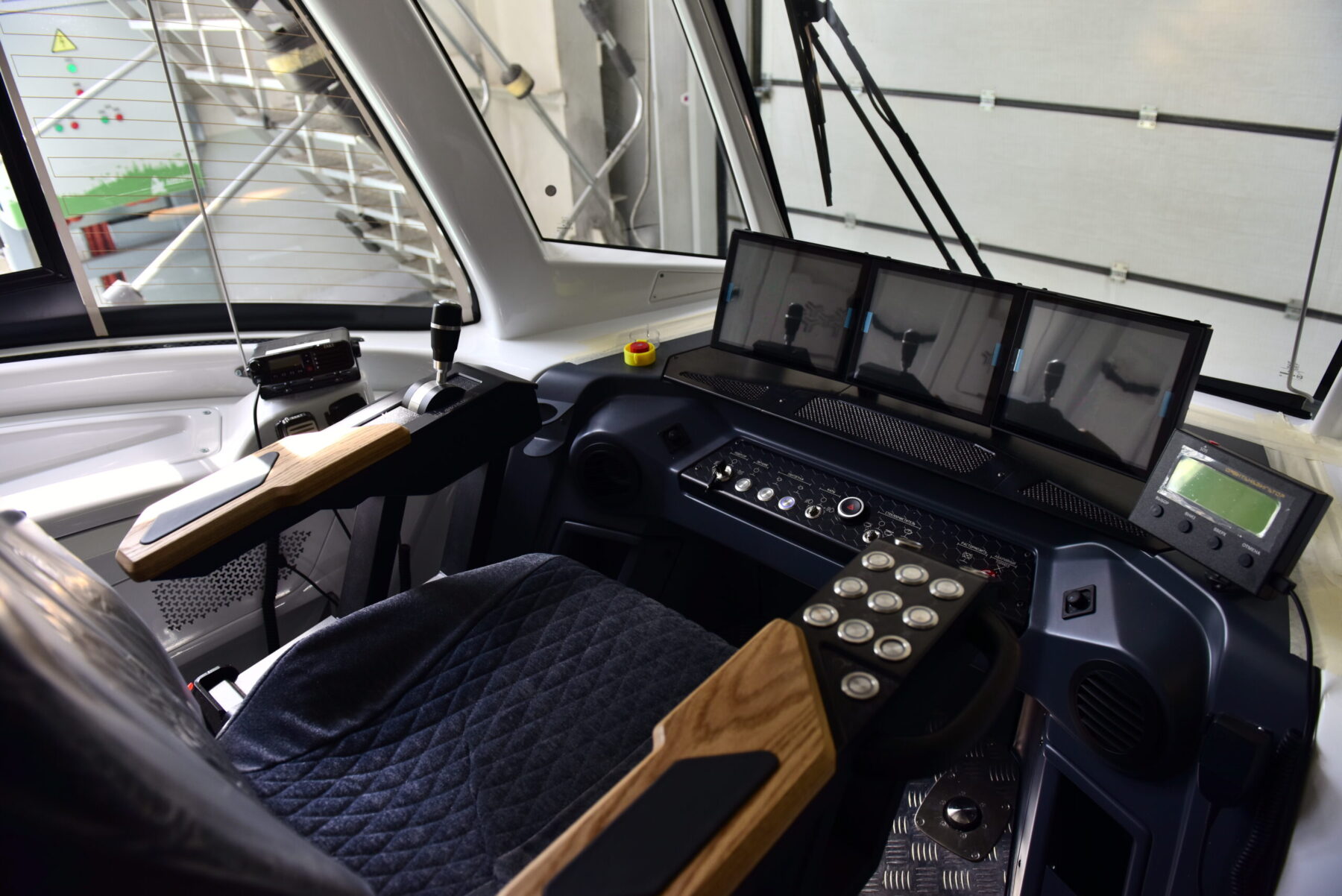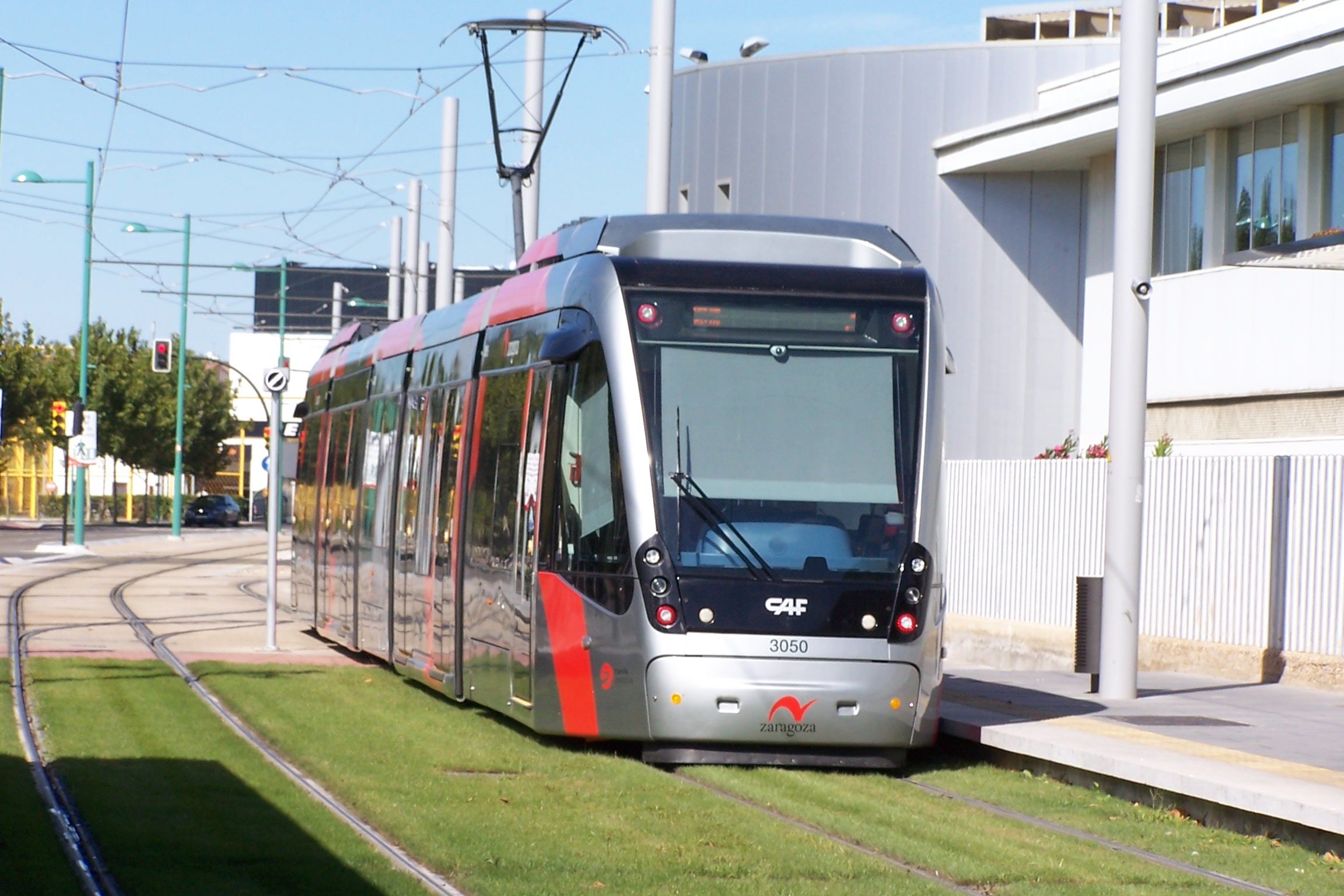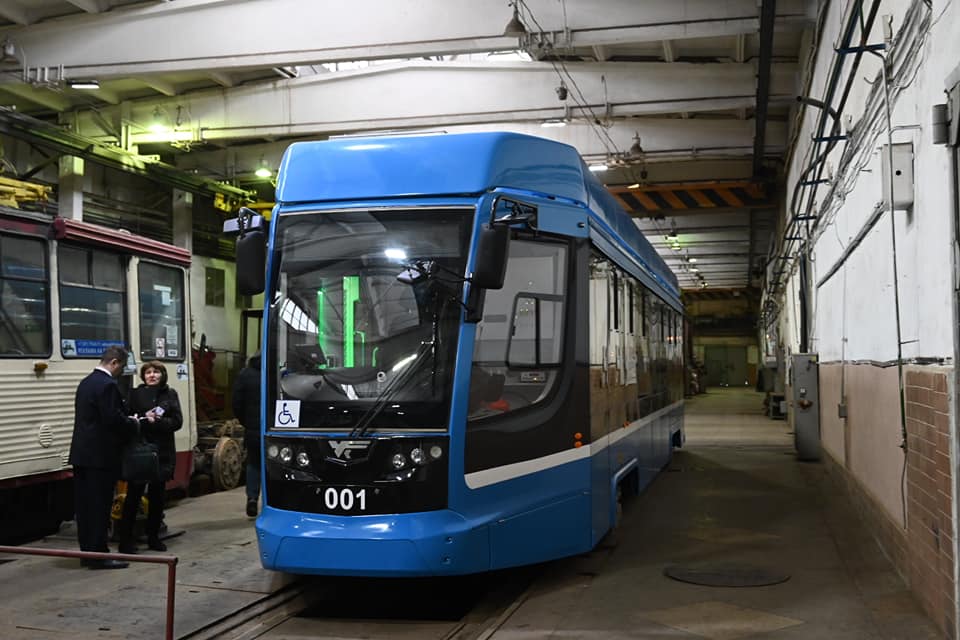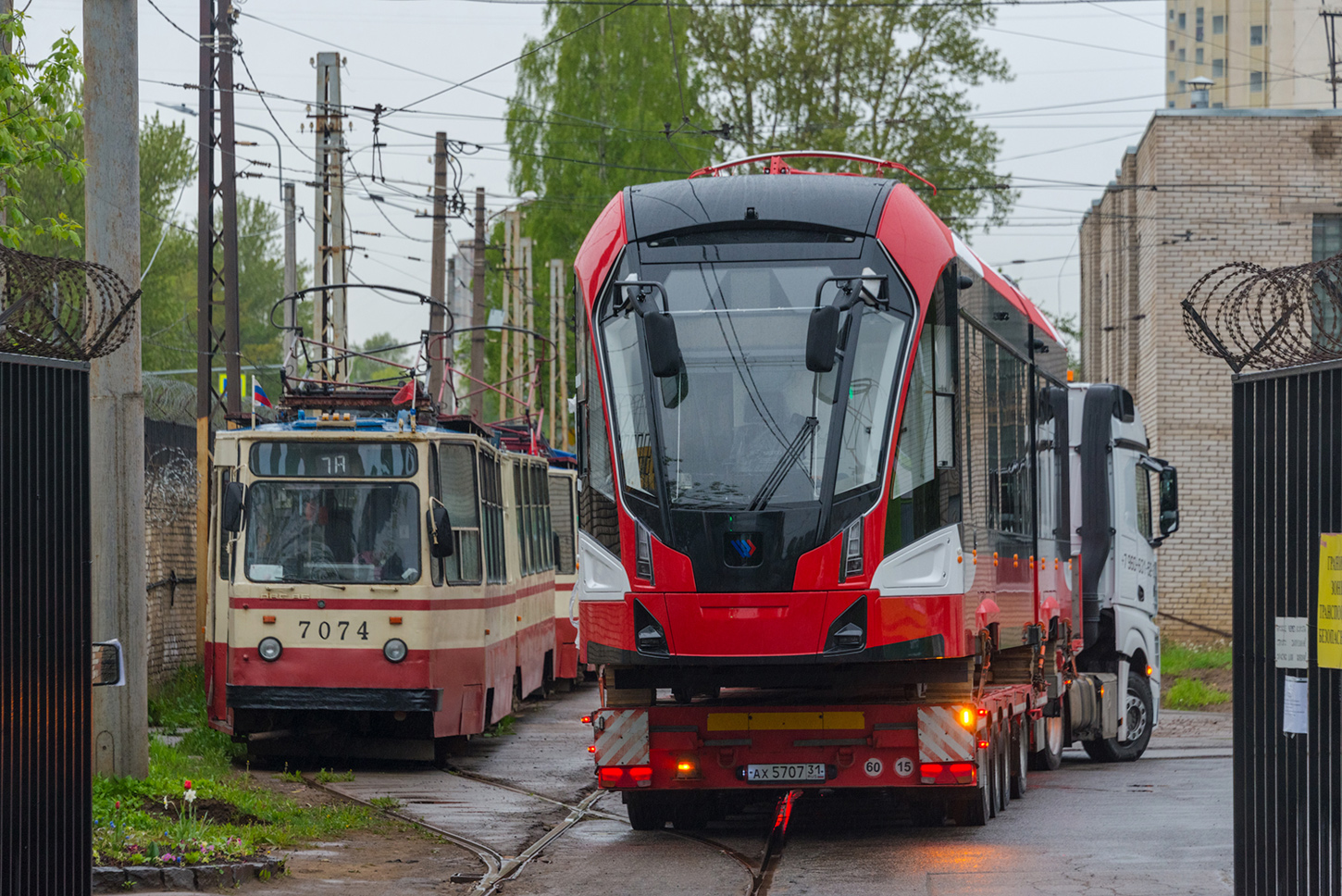PC Transport Systems (PC TS) handed over to the customer the 71-923M “Bogatyr M” tram with the automated train operation (ATO) system by Cognitive Tram Pilot, CAF announced the trials of the computer vision system in Spain and Norway, and the Usk-Katav Car-Building Plant (UKCP) pushed back the deadlines for creating a driverless vehicle.
The first 71-923M “Bogatyr M” tram was delivered to the Gorelektrotrans operator in St. Petersburg under a contract for 57 cars, awarded to PC TS this year. At the same time, photos of the tram at the final stage of assembly were published by the producer at the end of last week.
Compared to the previous vehicles of this series (12 trams were produced), the new “Bogatyr M” has a number of differences. In particular, an increased autonomous run of up to 3 km in fully occupied mode is claimed due to more powerful gel batteries. A system of active automated assistance to the driver – Cognitive Tram Pilot (named as “autopilot”, the technology by Cognitive Pilot, a joint venture of Sberbank and Cognitive Technologies) and an automatic turnout switch has also been introduced. It is worth noting that the requirement to equip trams with ATO was included in the technical requirements of the tender. Earlier in 2019, the Cognitive Tram Pilot system was tested in Moscow on another PC TS tram, 71-931M “Vityaz-M” model.
 The cabin of the new 71-923M “Bogatyr M” tram. Source: PC TS
The cabin of the new 71-923M “Bogatyr M” tram. Source: PC TS
In terms of the readiness of trams with ATO, PC TS is significantly ahead of other Russian and global players. Thus, another major international manufacturer – Construcciones y Auxiliar de Ferrocarriles (CAF) – has just announced that it plans to start testing in Zaragoza and Oslo in July the Urbos 3 five-section tram, which will be equipped with a computer vision system consisting of radars, lidars and video cameras. Trials will be divided into several stages. As Nacho Celaya Vela, autonomous vehicles technical project manager of CAF, told El Periodico newspaper, at the first stage, within six months, a positioning system will be tested in the depot, which involves real-time determining of the tram location using GPS and video cameras. According to him, Zaragoza and Oslo were chosen as test sites due to differences in climatic conditions.
 CAF Urbos 3 tram in Zaragoza. Source: wikipedia.org
CAF Urbos 3 tram in Zaragoza. Source: wikipedia.org
Another international player, Siemens, has been conducting active tests for several years, but has set a deadline for the introduction of driverless technology for 2026. In 2020, Newag’s vision-equipped Nevelo tram was tested in Krakow, Poland: it traveled more than 3 km with passengers, but the commercial implementation of the technology was not announced. Also, in May 2021, Skoda Transportation signed a memorandum with the University of West Bohemia and the INTENS technology corporation on work in this direction: it is planned to test the ATO tram in the conditions of the 5G network in the Czech Pilsen, but the commercial operation of the vehicle is awaited in 2027.
UKCP also announced work on an ATO tram in 2020: it is supposed to be operated at the Vostochny cosmodrome, SPA Automatics (both with UKCP are the parts of Roscosmoc) should also take part in the tests. In mid-April, the head of UKCP, Roman Novikov, announced that the assembly of the first ATO vehicle would begin at the end of 2022, but last week he also told Gazeta.Ru that work on the project was being delayed due to the lack of a regulatory framework.
As noted at UKCP, at the end of 2022, it is planned not to start assembling, but only developing the ATO tram, at the same time adding about the “full readiness of the technical specifications for integrating software with 71-628 and 71-628M models of trams”. “We need a regulatory framework that allows the movement of unmanned vehicles. As soon as this issue is resolved, we will be able to move on with the project”, UKCP quoted in Gazeta.Ru.
 71-628 tram by UKCP. Source: vecherka.su
71-628 tram by UKCP. Source: vecherka.su
In June this year, the Ministry of Transport of Russia should prepare a draft of an act on highly automated and fully automated vehicles. At the same time, already in April, the basic national standard for ATO commuter trains was approved in Russia, which will come into force on September 1 this year.















